Liquid Hydrogen Application for Aero-Engine More-Electrical System: Current Status, Challenges and Future Prospects
Abstract
1. Introduction
1.1. Carbon Neutrality Imperatives in Aviation
1.2. MEA Evolution Timeline
2. Key Technologies for Liquid Hydrogen Application
2.1. Liquid Hydrogen Storage, Transportation, and Refueling
2.2. Liquid Hydrogen-Fueled Electric Propulsion Technologies
2.3. Cryogenic Hydrogen Cooling Technology
2.3.1. Superconducting Machine Cooling
2.3.2. Cryogenic Cooling of Power Electronics
2.3.3. Aero-Engine Thermal Management via Liquid Hydrogen Cooling
- (a)
- Lubrication System Optimization
- (b)
- Compressor Inlet Conditioning
- (c)
- Turbine Blade Protection
- (d)
- Exhaust Heat Recovery
2.4. System-Level Hydrogen Utilization Strategy
- (a)
- Primary Cryogenic Distribution
- Forty percent mass flow drives the superconducting motor (SCM) powering boundary layer ingestion fans
- Sixty percent feeds the superconducting generator (SCG) coupled to the hydrogen turbine
- (b)
- Electrical Power Conditioning
- Fifty-five percent to DC-DC Converter 2
- Thirty percent charging superconducting magnetic storage (SMES)
- Fifteen percent through DC-DC Converter 3
- (c)
- Thermal Energy Recovery
- (d)
- Combustion Preparation
- Elevates fuel cell inlet temperatures to 353 K (PEMFC optimal)
- Preconditions combustion hydrogen for 98% LHV utilization
- Recovers 35% of exhaust energy otherwise wasted
- (e)
- Final Energy Conversion
- Thirty percent combusts in the hydrogen turbine (42% Brayton cycle efficiency)
3. Hydrogen Safety Research
3.1. Flammability and Explosivity
3.2. Hydrogen Corrosion
4. Challenges in Liquid Hydrogen Implementation
4.1. Lightweight Design of Liquid Hydrogen Cooling System
4.2. Cryogenic Hydrogen Pipeline Configuration and Thermal Management
5. Future Perspectives
- (a)
- High-efficiency superconducting motor architectures are projected to dominate next-generation 10 MW-class aeronautical power systems, with scalability potential exceeding current megawatt-range limitations.
- (b)
- The integration of liquid hydrogen as a dual-purpose coolant and fuel within multi-electric aircraft systems will enable the complete elimination of auxiliary cryogens (nitrogen, helium), thereby resolving historical challenges of parasitic mass penalties and operational redundancy. This synergistic approach promises to redefine aircraft energy density parameters while achieving net-zero-emission targets through closed-loop hydrogen utilization.
- (c)
- The liquid hydrogen application process proposed in this paper successfully couples two technologies, fuel cell and turbo-electric, and the experimental study and application of this technological solution is a hot topic for the future.
6. Conclusions
Author Contributions
Funding
Conflicts of Interest
References
- Xiang, Q.; Hu, X.; Wang, M.; Qiao, X.; Wang, S. Observations on the Development of Hydrogen-powered Aircraft Propulsion System. Aeroengine 2024, 50, 1–9. (In Chinese) [Google Scholar]
- Ji, S.; Liu, J.; Zhu, Y. Exploring the low-carbon development path of China’s civil aviation energy use in the context of “dual carbon” goals. Int. Pet. Econ. 2022, 30, 31–39. [Google Scholar]
- Abrantes, I.; Ferreira, A.F.; Silva, A.E.; Costa, M. Sustainable aviation fuels and imminent technologies-CO2 emissions evolution towards 2050. J. Clean. Prod. 2021, 313, 127937. [Google Scholar]
- Zhang, Z.; Xu, Y.; Yao, Y.; Xu, Y. Electric Power System and Key Technologies of More Electric Aircraft. J. Nanjing Univ. Aeronaut. Astronaut. 2022, 54, 969–984. (In Chinese) [Google Scholar]
- Tiwari, S.; Pekris, M.J.; Doherty, J.J. A review of liquid hydrogen aircraft and propulsion technologies. Int. J. Hydrog. Energy 2024, 57, 1174–1196. [Google Scholar]
- Ansell, P.J. Hydrogen-Electric Aircraft Technologies and Integration: Enabling an environmentally sustainable aviation future. IEEE Electrif. Mag. 2022, 10, 6–16. [Google Scholar]
- Balachandran, T.; Lee, D.; Salk, N.; Haran, K.S. A fully superconducting air-core machine for aircraft propulsion. IOP Conf. Ser. Mater. Sci. Eng. 2020, 756, 12030. [Google Scholar]
- European Union Aviation Safety Agency. Certification Specifications and Acceptable Means of Compliance for Large Aeroplanes (CS-25); European Union Aviation Safety Agency: Cologne, Germany, 2023. [Google Scholar]
- Han, Y.Q. Progress of Hydrogen Powered Aviation in 2023. Aerosp. Power 2024, 1, 38–42. (In Chinese) [Google Scholar]
- Subodh, K.M.; John, Z.G.; Steven, M.A.; Sullivan, R.M.; Manderscheid, J.M.; Murthy, P.L.N. Review of Current State of the Art and Key Design Issues with Potential Solutions for Liquid Hydrogen Cryogenic Storage Tank Structures for Aircraft Applications. 2006. Available online: https://ntrs.nasa.gov/citations/20060056194 (accessed on 10 December 2024).
- Chen, H.; Yang, X.; Wang, X. Study on Adiabatic Performance and Lightweight of Airborne Liquid HydrogenStorage Tank. Aeronaut. Sci. Technol. 2024, 35, 36–46. (In Chinese) [Google Scholar]
- Rompokos, P.; Rolt, A.; Nalianda, D.; Isikveren, A.T.; Senné, C.; Gronstedt, T.; Abedi, H. Synergistic Technology Combinations for Future Commercial Aircraft Using Liquid Hydrogen. J. Eng. Gas Turbines Power 2021, 143, 071017. [Google Scholar]
- Mantzaroudis, V.K.; Theotokoglou, E. Computational Analysis of Liquid Hydrogen Storage Tanks for Aircraft Applications. Materials 2023, 16, 2245. [Google Scholar] [CrossRef] [PubMed]
- Virdi, P.S.; Guo, W.; Cattafesta, L.; Cheetham, P.; Cooley, L.; Gladin, J.; He, J.; Ionel, D.M.; Kim, C.; Li, H.; et al. Liquid hydrogen storage and transfer-control system for integrated zero emission aviation (IZEA). IOP Conf. Ser. Mater. Sci. Eng. 2024, 1302, 012024. [Google Scholar]
- Nam, G.; Sung, H.; Ha, D.; No, H.-W.; Koo, T.-H.; Ko, R.-K.; Park, M. Design and Analysis of Cryogenic Cooling System for Electric Propulsion System Using Liquid Hydrogen. Energies 2023, 16, 527. [Google Scholar] [CrossRef]
- Wan, X.; Wang, P.; Zhang, H.; Zhang, C.; Zhou TMa, C.; Lin, B.; Zhou, R.; Tang, Y.; Fu, Y. A Review of the Key Technologies of Hydrogen Energy in the Aviation Engine Industry. J. Xihua Univ. (Nat. Sci. Ed.) 2024, 43, 8–15+46. (In Chinese) [Google Scholar]
- Liao, Z.Q. Research on the Development of Hybrid Electric Propulsion System. Aerosp. Power 2018, 2, 45–50. (In Chinese) [Google Scholar]
- International Civil Aviation Organization. Report of the Tenth Meeting of the Committee on Aviation Environmental Protection; International Civil Aviation Organization: Montreal, Canada, 2016. [Google Scholar]
- Nategh, S.; Barber, D.; Boglietti, A.; Lindberg, D.; Aglen, O.; Brammer, R. A study on thermal effects of different potting strategies in traction motors. In Proceedings of the 2018 IEEE International Conference on Electrical Systems for Aircraft, Railway, Ship Propulsion and Road Vehicles & International Transportation Electrification Conference (ESARS-ITEC), Nottingham, UK, 7–9 November 2018; pp. 1–6. [Google Scholar]
- Kulan, M.C.; Baker, N.J. Development of a thermal equivalent circuit to quantify the effect of thermal paste on heat flow through a permanent magnet alternator. IEEE Trans. Ind. Appl. 2018, 55, 1261–1271. [Google Scholar] [CrossRef]
- Polikarpova, M.; Ponomarev, P.; Lindh, P.; Petrov, I.; Jara, W.; Naumanen, V.; Tapia, J.A.; Pyrhonen, J. Hybrid cooling method of axial-flux permanent-magnet machines for vehicle applications. IEEE Trans. Ind. Electron. 2015, 62, 7382–7390. [Google Scholar] [CrossRef]
- Polikarpova, M.; Lindh, P.M.; Tapia, J.A.; Pyrhönen, J.J. Application of potting material for a 100 kW radial flux PMSM. In Proceedings of the 2014 International Conference on Electrical Machines (ICEM), Berlin, Germany, 2–5 September 2014; pp. 2146–2151. [Google Scholar]
- Li, H.; Klontz, K.W.; Ferrell, V.E.; Barber, D. Thermal models and electrical machine performance improvement using encapsulation material. IEEE Trans. Ind. Appl. 2016, 53, 1063–1069. [Google Scholar] [CrossRef]
- Li, L.; Zhang, J.; Zhang, C.; Yu, J. Research on electromagnetic and thermal issue of high-efficiency and high-power-density outer-rotor motor. IEEE Trans. Appl. Supercond. 2016, 26, 5204805. [Google Scholar] [CrossRef]
- Mueller, M.A.; Burchell, J.; Chong, Y.C.; Keysan, O.; McDonald, A.; Galbraith, M.; Subiabre, E.J.P.E. Improving the thermal performance of rotary and linear air-cored permanent magnet machines for direct drive wind and wave energy applications. IEEE Trans. Energy Convers. 2018, 34, 773–781. [Google Scholar] [CrossRef]
- Chen, Z. Study on the Energy-Saving Technology Formotors Based on Heat Conduction and Dissipationand Its Applications; Donghua University: Shanghai, China, 2016. (In Chinese) [Google Scholar]
- Yang, Y.; Bilgin, B.; Kasprzak, M.; Nalakath, S.; Sadek, H.; Preindl, M.; Cotton, J.; Schofield, N.; Emadi, A. Thermal management of electric machines. IET Electr. Syst. Transp. 2017, 7, 104–116. [Google Scholar]
- Popescu, M.; Staton, D.A.; Boglietti, A.; Cavagnino, A.; Hawkins, D.; Goss, J. Modern heat extraction systems for power traction machines—A review. IEEE Trans. Ind. Appl. 2016, 52, 2167–2175. [Google Scholar]
- Dezhin, D.; Dezhina, I.; Ilyasov, R. Superconducting Propulsion System with LH2 Cooling for All-Electric Aircraft. J. Physics. Conf. Ser. 2020, 1559, 12143. [Google Scholar] [CrossRef]
- Sebastian, M.A.P.; Haugan, T.J.; Kovacs, C.J. Design and Scaling Laws of a 40-MW-class Electric Power Distribution System for Liquid-H2 Fuel-Cell Propulsion. In Proceedings of the 2021 AIAA/IEEE Electric Aircraft Technologies Symposium (EATS), Denver, CO, USA, 11–13 August 2021; pp. 1–12. [Google Scholar]
- Sirimanna, S.; Balachandran, T.; Salk, N.; Xiao, J.; Lee, D.; Haran, K. Electric Propulsors for Zero-Emission Aircraft: Partially superconducting machines. IEEE Electrif. Mag. 2022, 10, 43–56. [Google Scholar]
- Dezhin, D.; Ilyasov, R. Development of Fully Superconducting 5 MW Aviation Generator with Liquid Hydrogen Cooling. EUREKA Phys. Eng. 2022, 1, 62–73. [Google Scholar]
- Nam, G.; Le Dinh Vuong Sung, H.; Sung, H.-J.; Lee, S.J.; Park, M. Conceptual Design of an Aviation Propulsion System Using Hydrogen Fuel Cell and Superconducting Motor. IEEE Trans. Appl. Supercond. 2021, 31, 5202307. [Google Scholar]
- Terao, Y.; Akasaka, K.; Ohsaki, H.; Okai, K.; Taguchi, H. Electromagnetic analysis of fully superconducting motors employing dilute gas rotor and liquid hydrogen stator cooling structure. J. Phys. Conf. Ser. 2023, 2545, 12027. [Google Scholar]
- Nøland, J.; Hartmann, C.; Mellerud, R. Next-Generation Cryo-Electric Hydrogen-Powered Aviation. TechRxiv 2021. [Google Scholar] [CrossRef]
- Sugouchi, R.; Komiya, M.; Miura, S.; Iwakuma, M.; Yoshida, K.; Sasayama, T.; Yoshida, T.; Yamamoto, K.; Sasamori, Y.; Honda, H.; et al. Conceptual Design and Electromagnetic Analysis of 2 MW Fully Superconducting Synchronous Motors with Superconducting Magnetic Shields for Turbo-Electric Propulsion System. IEEE Trans. Appl. Supercond. 2020, 30, 3601905. [Google Scholar] [CrossRef]
- Liu, D.; Lin, J.; Petrov, I.; Lindh, P.; Aarniovuori, L. Preliminary Assessment of New Armature Winding Concepts for High-Speed Superconducting Motors. IEEE Trans. Appl. Supercond. 2024, 34, 5202606. [Google Scholar]
- Dezhin, D.S.; Dezhina, I.N. Development of the Future Aircraft Propulsion System Based on HTS Electrical Equipment with Liquid Hydrogen Cooling. IEEE Trans. Appl. Supercond. 2022, 32, 3601105. [Google Scholar]
- Elwakeel, A.; Feng, Z.; McNeill, N.; Zhang, M.; Williams, B.; Yuan, W. Study of Power Devices for Use in Phase-Leg at Cryogenic Temperature. IEEE Trans. Appl. Supercond. 2021, 31, 5000205. [Google Scholar]
- Wang, F.; Chen, R.; Gui, H.; Niu, J.; Tolbert, L.; Costinett, D.; Blalock, B.; Liu, S.; Hull, J.; Williams, J.; et al. MW-Class Cryogenically-Cooled Inverter for Electric-Aircraft Applications. In Proceedings of the 2019 AIAA/IEEE Electric Aircraft Technologies Symposium (EATS), Indianapolis, IN, USA, 22–24 August 2019; pp. 1–9. [Google Scholar]
- Jansen, R.; Bowman, C.; Jankovsky, A.; Dyson, R.; Felder, J. Overview of NASA Electrified Aircraft Propulsion Research for Large Subsonic Transports. In Proceedings of the 53rd AIAA/SAE/ASEE Joint Propulsion Conference, Atlanta, GA, USA, 10–12 July 2017. [Google Scholar]
- Liao, Y.; Elwakeel, A.; Xiao, Y.; Alzola, R.P.; Zhang, M.; Yuan, W.; Feliciano, A.J.C.; Graber, L. Review of semiconductor devices and other power electronics components at cryogenic temperature. iEnergy 2024, 3, 95–107. [Google Scholar]
- Gui, H.; Chen, R.; Niu, J.; Zhang, Z.; Tolbert, L.M.; Wang, F.F.; Blalock, B.J.; Costinett, D.; Choi, B.B. Review of Power Electronics Components at Cryogenic Temperatures. IEEE Trans. Power Electron. 2020, 35, 5144–5156. [Google Scholar]
- Sun, X.; Cheng, W.; Mu, Z.; Song, Y. White Paper on the Development of Electric Aircraft. Aeronaut. Sci. Technol. 2019, 30, 1–7. (In Chinese) [Google Scholar]
- Chen, R.; Dong, Z.; Zhang, Z.; Gui, H.; Niu, J.; Ren, R.; Wang, F.; Tolbert, L.M.; Blalock, B.J.; Costinett, D.J.; et al. Core Characterization and Inductor Design Investigation at Low Temperature. In Proceedings of the 2018 IEEE Energy Conversion Congress and Exposition (ECCE), Portland, OR, USA, 23–27 September 2018; pp. 4218–4225. [Google Scholar]
- Chen, R.; Niu, J.; Ren, R.; Gui, H.; Wang, F.; Tolbert, L.; Choi, B.; Brown, G. A Cryogenically-Cooled MW Inverter for Electric Aircraft Propulsion. In Proceedings of the 2020 AIAA/IEEE Electric Aircraft Technologies Symposium (EATS), New Orleans, LA, USA, 26–28 August 2020; pp. 1–10. [Google Scholar]
- Alafnan, H.; Pei, X.; Khedr, M.; Alsaleh, I.; Albaker, A.; Alturki, M.; Mansour, D.-E.A. The Possibility of Using Superconducting Magnetic Energy Storage/Battery Hybrid Energy Storage Systems Instead of Generators as Backup Power Sources for Electric Aircraft. Sustainability 2023, 15, 1806. [Google Scholar] [CrossRef]
- Yazdani-Asrami, M.; Seyyedbarzegar, S.M.; Zhang, M.; Yuan, W. Insulation Materials and Systems for Superconducting Powertrain Devices in Future Cryo-Electrified Aircraft: Part I—Material Challenges and Specifications, and Device-Level Application. IEEE Electr. Insul. Mag. 2022, 38, 23–36. [Google Scholar]
- Wright, S.J.; Dixon-Hardy, D.W.; Heggs, P.J. Aircraft air conditioning heat exchangers and atmospheric fouling. Therm. Sci. Eng. Prog. 2018, 7, 184–202. [Google Scholar]
- Wright, S.; Andrews, G.; Sabir, H. A review of heat exchanger fouling in the context of aircraft air-conditioning systems, and the potential for electrostatic filtering. Appl. Therm. Eng. 2009, 29, 2596–2609. [Google Scholar]
- Tamburrano, P.; Romagnuolo, L.; Frosina, E.; Caramia, G.; Distaso, E.; Sciatti, F.; Senatore, A.; De Palma, P.; Amirante, R. Fuels systems and components for future airliners fuelled with liquid hydrogen. J. Phys. Conf. Ser. 2022, 2385, 12041. [Google Scholar] [CrossRef]
- Cai, H.K.; Su, L.J.; Liao, Y.D.; Weng, Z.; Xu, C. Heat Dissipation Characteristics Analysis of Surface Air-Oil Heat Exchanger Applied in Aircraft Engine. J. Southwest Jiaotong Univ. 2021, 56, 214–220. (In Chinese) [Google Scholar]
- Lu, Y.; Liu, Z. Heat transfer characteristics calculation for aero-engine shell-tube fuel-oil heat exchanger. J. Aerosp. Power 2014, 29, 2830–2835. (In Chinese) [Google Scholar]
- Su, Z.; Mao, H.; Song, G. Thermoanalysis Method of Aeroengine Lubrication System Based on Heat Management Technology. Aeroengine 2016, 42, 44–50. (In Chinese) [Google Scholar]
- Li, M.; Chen, J. Analysis to Hydrogen Gas Turbine Thermal Management Technology of Fly Zero. Hydrog. Powered Aviat. 2022, 4, 29–32. (In Chinese) [Google Scholar]
- Liu, J.; Luo, N.; Li, J.; Li, K. Research Status and Development Constraints of Hydrogen Aero Engines. Mater. Res. Appl. 2024, 18, 299–308. (In Chinese) [Google Scholar]
- Lin, A.; Zheng, Q.; Zhang, H.; Jiang, Y. Analysis of mass injection cooling on aero-enginecompressor characteristics. J. Harbin Eng. Univ. 2019, 40, 1608–1615. (In Chinese) [Google Scholar]
- Al-Ibrahim, A.M.; Varnham, A. A review of inlet air-cooling technologies for enhancing the performance of combustion turbines in Saudi Arabia. Appl. Therm. Eng. 2010, 30, 1879–1888. [Google Scholar] [CrossRef]
- Najjar, Y.S.H. Enhancement of performance of gas turbine engines by inlet air cooling and cogeneration system. Appl. Therm. Eng. 1996, 16, 163–173. [Google Scholar] [CrossRef]
- Dos Santos, A.P.P.; Andrade, C.R.; Zaparoli, E.L. Comparison of Different Gas Turbine Inlet Air Cooling Methods. World Acad. Sci. Eng. Technol. 2012, 61, 45. [Google Scholar]
- Li, W.; Cao, J.; Xiao, W. Technology and Development Trend of Hydrogen Gas Turbine. Hydrog. Powered Aviat. 2022, 2, 39–42. (In Chinese) [Google Scholar]
- Patrao, A.C.; Jonsson, I.; Xisto, C.; Lundbladh, A.; Grönstedt, T. Compact heat exchangers for hydrogen-fueled aero engine intercooling and recuperation. Appl. Therm. Eng. 2024, 243, 122538. [Google Scholar]
- Misirlis, D.; Vlahostergios, Z.; Flouros, M.; Salpingidou, C.; Donnerhack, S.; Goulas, A.; Yakinthos, K. Optimization of Heat Exchangers for Intercooled Recuperated Aero Engines. Aerospace 2017, 4, 14. [Google Scholar] [CrossRef]
- Zhao, B.; Xuan, Y. A review of research on intercoolers and recuperators in aero-engines. Acta Aeronaut. Astronaut. Sin. 2017, 38, 1–21. (In Chinese) [Google Scholar]
- Decang, L.; Yong, K.; Wen, G.; Qiuyue, Z. Intercooled Recuperative Aero Engine System Optimization. J. Eng. Gas Turbines Power 2022, 144, 81011. [Google Scholar]
- Deng, H.; Li, L.; Yang, J.; Jiang, H.; Wang, J. Development and application prospect of light and high efficiency heatexchanger in aviation and aerospace. J. Aerosp. Power 2022, 37, 2272–2285. (In Chinese) [Google Scholar]
- Carozza, A.; Murshed, S.M.S. Heat Exchangers in the Aviation Engineering. Murshed, S.M.S., Lopes, M.M., Eds.; IntechOpen: Rijeka, Croatia, 2017. [Google Scholar]
- Saltzman, D.; Bichnevicius, M.; Lynch, S.; Simpson, T.W.; Reutzel, E.W.; Dickman, C.; Martukanitz, R. Design and evaluation of an additively manufactured aircraft heat exchanger. Appl. Therm. Eng. 2018, 138, 254–263. [Google Scholar]
- International Civil Aviation Organization. Report of the Twelfth Meeting of the Committee on Aviation Environmental Protection; International Civil Aviation Organization: Montreal, Canada, 2022. [Google Scholar]
- Ma, H.; Dang, X. Operation Optimization for Cooling System of Large Aircraft. In Proceedings of the 2023 Asia-Pacific International Symposium on Aerospace Technology, Singapore, 2 July 2024; pp. 609–624. [Google Scholar]
- Zaccaria, V.; Fentaye, A.D.; Stenfelt, M.; Kyprianidis, K.G. Probabilistic Model for Aero-Engines Fleet Condition Monitoring. Aerospace 2020, 7, 66. [Google Scholar] [CrossRef]
- Shanmuganathan, V.K.; Haran, A.P.; Gayathri, N. Condition monitoring maintenance of aero-engines through LUMS—A method for the implementation of Lean tools. Measurement 2015, 73, 226–230. [Google Scholar]
- Tahan, M.; Tsoutsanis, E.; Muhammad, M.; Karim, Z.A.A. Performance-based health monitoring, diagnostics and prognostics for condition-based maintenance of gas turbines: A review. Appl. Energy 2017, 198, 122–144. [Google Scholar]
- Yazdani-Asrami, M.; Sadeghi, A.; Atrey, M.D. Selecting a cryogenic cooling system for superconducting machines: General considerations for electric machine designers and engineers. Int. J. Refrig. 2022, 140, 70–81. [Google Scholar]
- Tano, I.; Rasouli, E.; Ziev, T.; Seo, J.; Lamprinakos, N.; Vaishnav, P.; Rollett, A.; Wu, Z.; Narayanan, V. A Scalable Compact Additively Manufactured Molten Salt to Supercritical Carbon Dioxide Heat Exchanger for Solar Thermal Application. J. Sol. Energy Eng. 2023, 146, 11007. [Google Scholar]
- Song, S.; Douvartzides, S.; Tsiakaras, P. Exergy analysis of an ethanol fuelled proton exchange membrane (PEM) fuel cell system for automobile applications. J. Power Sources 2005, 145, 502–514. [Google Scholar]
- Wang, Q.; Zhou, Z.; Lai, Y.; You, Y.; Liu, J.-G.; Wu, X.-L.; Terefe, E.; Chen, C.; Song, L.; Rauf, M.; et al. Phenylenediamine-Based FeNx/C Catalyst with High Activity for Oxygen Reduction in Acid Medium and Its Active-Site Probing. J. Am. Chem. Soc. 2014, 136, 10882–10885. [Google Scholar] [PubMed]
- Abohamzeh, E.; Salehi, F.; Sheikholeslami, M.; Abbassi, R.; Khan, F. Review of hydrogen safety during storage, transmission, and applications processes. J. Loss Prev. Process Ind. 2021, 72, 104569. [Google Scholar]
- Zhang, Y.J.; Peng, J.; Qian, Y.P.; Suo, J.; Ming, P.; Wan, Q.; Wang, A.; Yao, X. Key Technologies and Challenges of Hydrogen Powered Aviation. Aerosp. Power 2021, 1, 20–23. (In Chinese) [Google Scholar]
- Li, Y.; Zhao, Y.S.; Zhang, M.; Sun, Z.; Ye, X. Research Progress on Hydrogen Condition Performance of Aero Engine Materials. Technology 2022, 5, 36–38. (In Chinese) [Google Scholar]
- Zan, N.; Luo, X. Analysis on Influence Factors of Hydrogen Embrittlement Behavior of High Manganese Austenitic TWIP Steel for Aero Engine. J. New Ind. 2018, 8, 57–64. (In Chinese) [Google Scholar]
- Karaveli, K.K.; Kalaycıoğlu, M.; Bal, B.; Saracyakupoglu, T. Critical Failures in Aviation Components: The Role of Hydrogen Embrittlement. Aerosp. Eng. 2024, preprint. [Google Scholar] [CrossRef]
- Saulin, D.; Kuzminykh, K.; Poylov, V.Z. Determination of hydrogen influence on microhardness and microstructure characteristics of aviation alloys. Black Metall. 2024, 67, 332–339. [Google Scholar] [CrossRef]
- Bagarello, S. A short overview of hydrogen storage for sustainable aviation. In Aerospace Science and Engineering: IV Aerospace PhD-Days; Materials Research Forum LLC.: Millersville, PA, USA, 2024. [Google Scholar]
- Benson, C.M.; Ingram, J.; Battersby, P.; Mba, D.; Sethi, V.; Rolt, A.M. An Analysis of Civil Aviation Industry Safety Needs for the Introduction of Liquid Hydrogen Propulsion Technology. In Volume 3: Coal, Biomass, Hydrogen, and Alternative Fuels; Cycle Innovations; Electric Power; Industrial and Cogeneration; Organic Rankine Cycle Power Systems; ASME: New York, NY, USA, 2019. [Google Scholar]
- Ryali, L.; Stautner, W.; Mariappan, D. Impact of Internal Baffle Designs on Liquid Hydrogen Sloshing in Cryogenic Aircraft Fuel Tanks. IOP Conf. Ser. Mater. Sci. Eng. 2024, 1301, 012068. [Google Scholar]
- Brewer, G.D. Hydrogen Aircraft Technology, 1st ed; Routledge: London, UK, 1991. [Google Scholar]
- Hughes, C.; Gear, C.; Milne, K.; Webb, S.; Debney, D.; Kumar, N.; Howard, M.; Whillier, M.; Galsworthy, T.; Newbury, S.; et al. FLY ZERO: Our Vision for Zero Carbon Emission Air Travel. Available online: https://www.ati.org.uk/wp-content/uploads/2022/03/FZO-ALL-REP-0004-FlyZero-Our-Vision-for-Zero-Carbon-Emission-Air-Travel.pdf (accessed on 19 January 2025).
- Westenberger. Final Technical Report: Liquid Hydrogen Fuelled Aircraft—System Analysis. Available online: https://www.fzt.haw-hamburg.de/pers/Scholz/dglr/hh/text_2004_02_26_Cryoplane.pdf (accessed on 19 January 2025).
- Rompokos, P.; Rolt, A.; Nalianda, D.; Sibilli, T.; Benson, C. Cryogenic Fuel Storage Modelling and Optimisation for Aircraft Applications: Turbo Expo: Power for Land, Sea, and Air. In Volume 6: Ceramics and Ceramic Composites; Coal, Biomass, Hydrogen, and Alternative Fuels; Microturbines, Turbochargers, and Small Turbomachines; V006T03A001; ASME: New York, NY, USA, 2021. [Google Scholar]
- Verstraete, D. The Potential of Liquid Hydrogen for Long Range Aircraft Propulsion; Cranfield University: Bedford, UK, 2009. [Google Scholar]
- Winnefeld, C.; Kadyk, T.; Bensmann, B.; Krewer, U.; Hanke-Rauschenbach, R. Modelling and Designing Cryogenic Hydrogen Tanks for Future Aircraft Applications. Energies 2018, 11, 105. [Google Scholar] [CrossRef]
- Chen, J.; Zhu, W.; Gao, P.; Zhang, F. Research Status and Prospects of Pre-cooling Equipment in Hydrogen Refueling Stations. Energy Res. Util. 2021, 1, 25–29. (In Chinese) [Google Scholar]
- Bonab, S.A.; Yazdani-Asrami, M. Artificial intelligence-based model to predict the heat transfer coefficient in flow boiling of liquid hydrogen as fuel and cryogenic coolant in future hydrogen-powered cryo-electric aviation. Fuel 2025, 381, 133323. [Google Scholar]
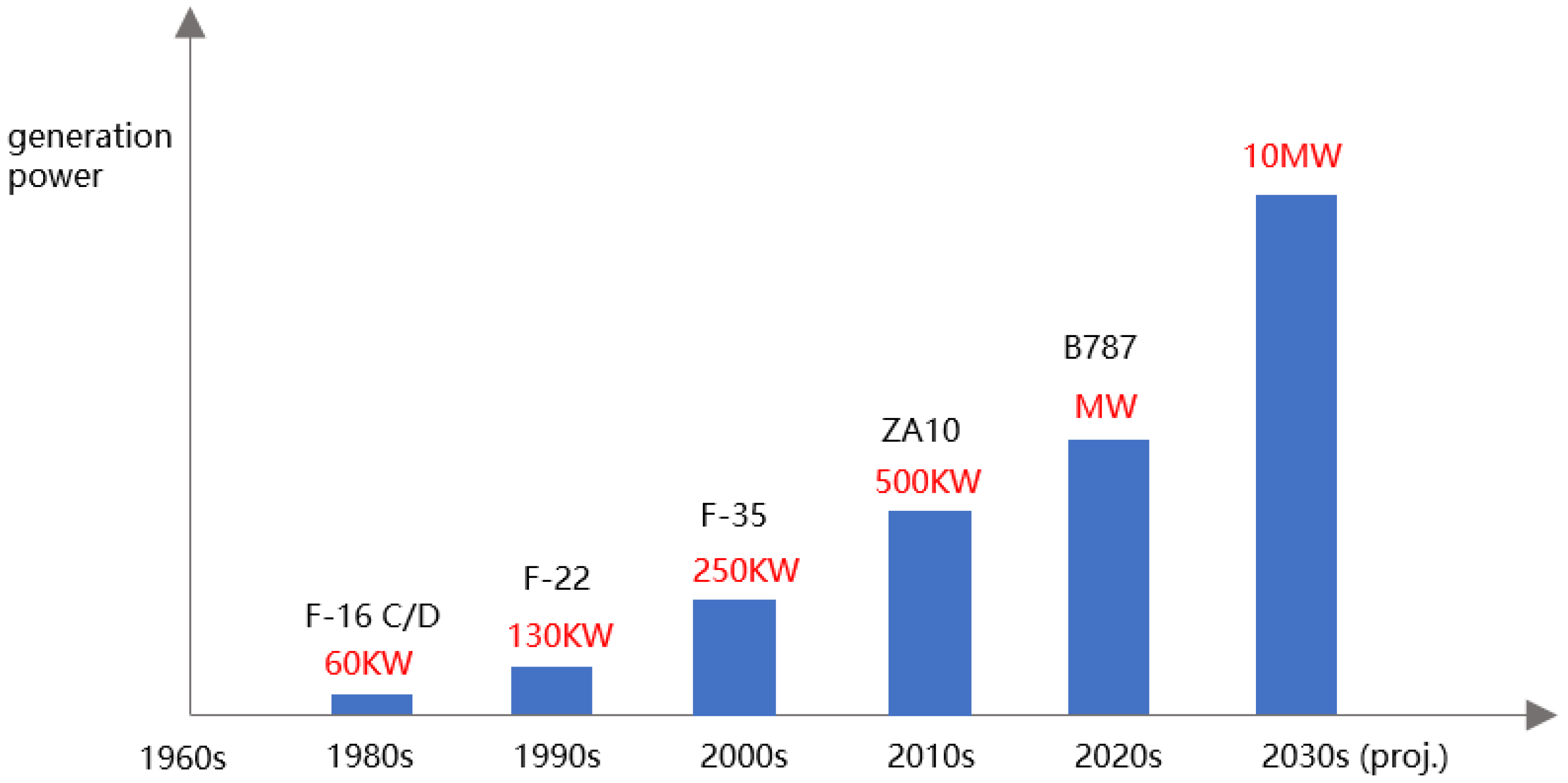

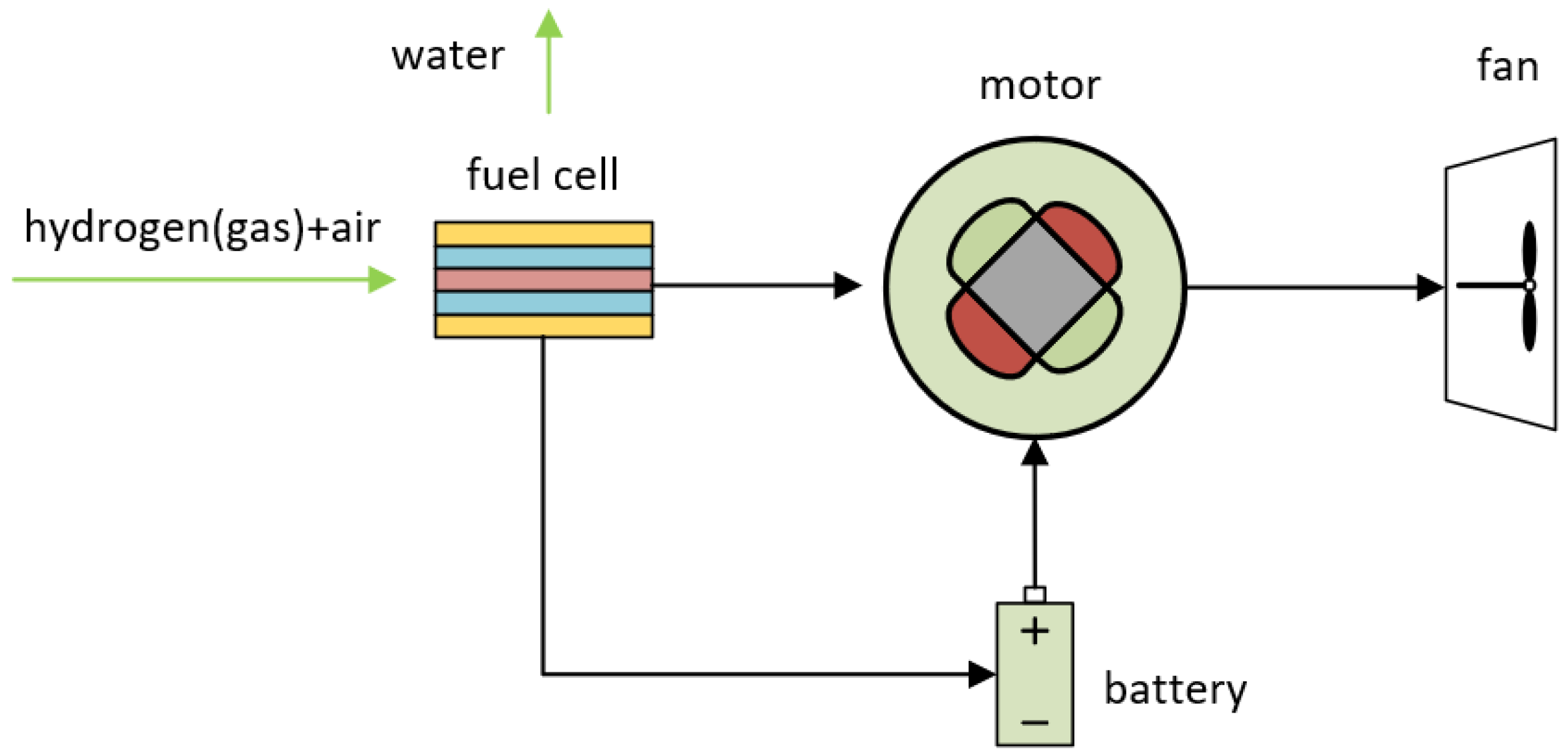

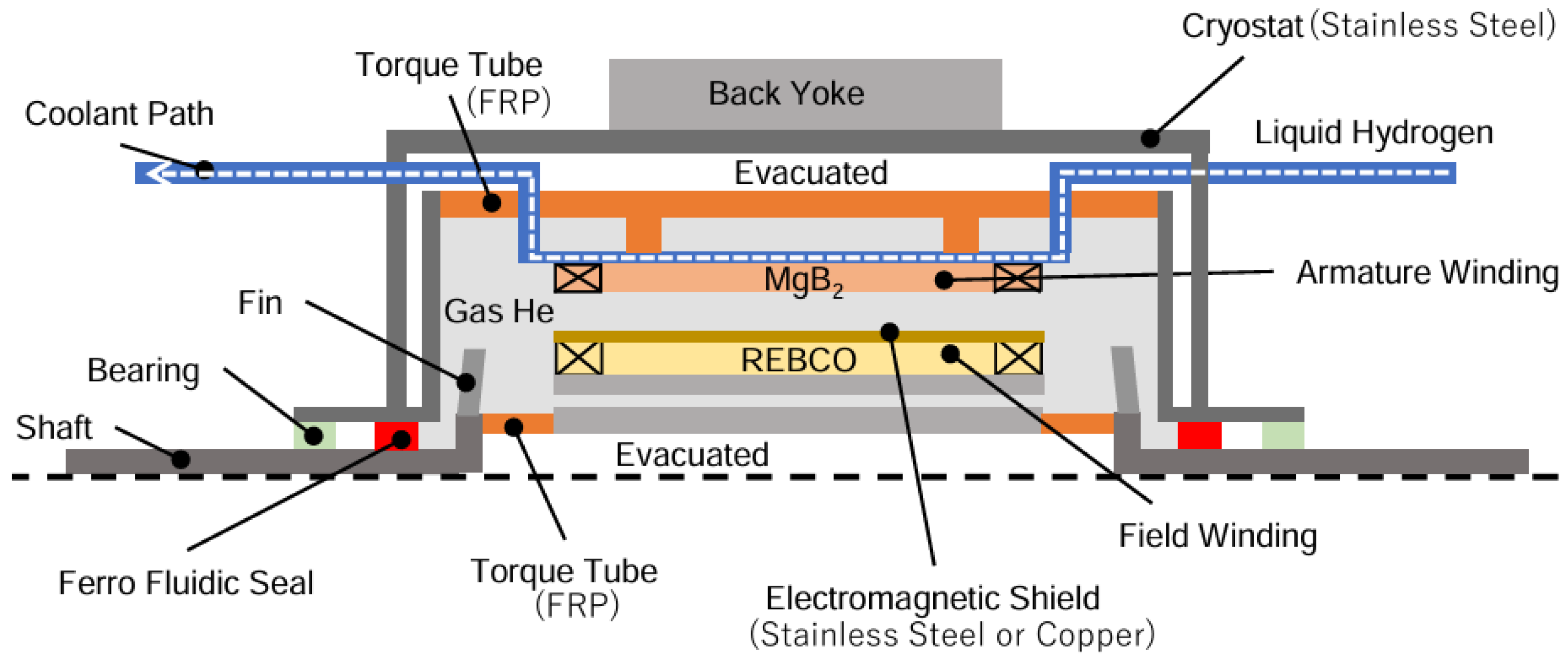

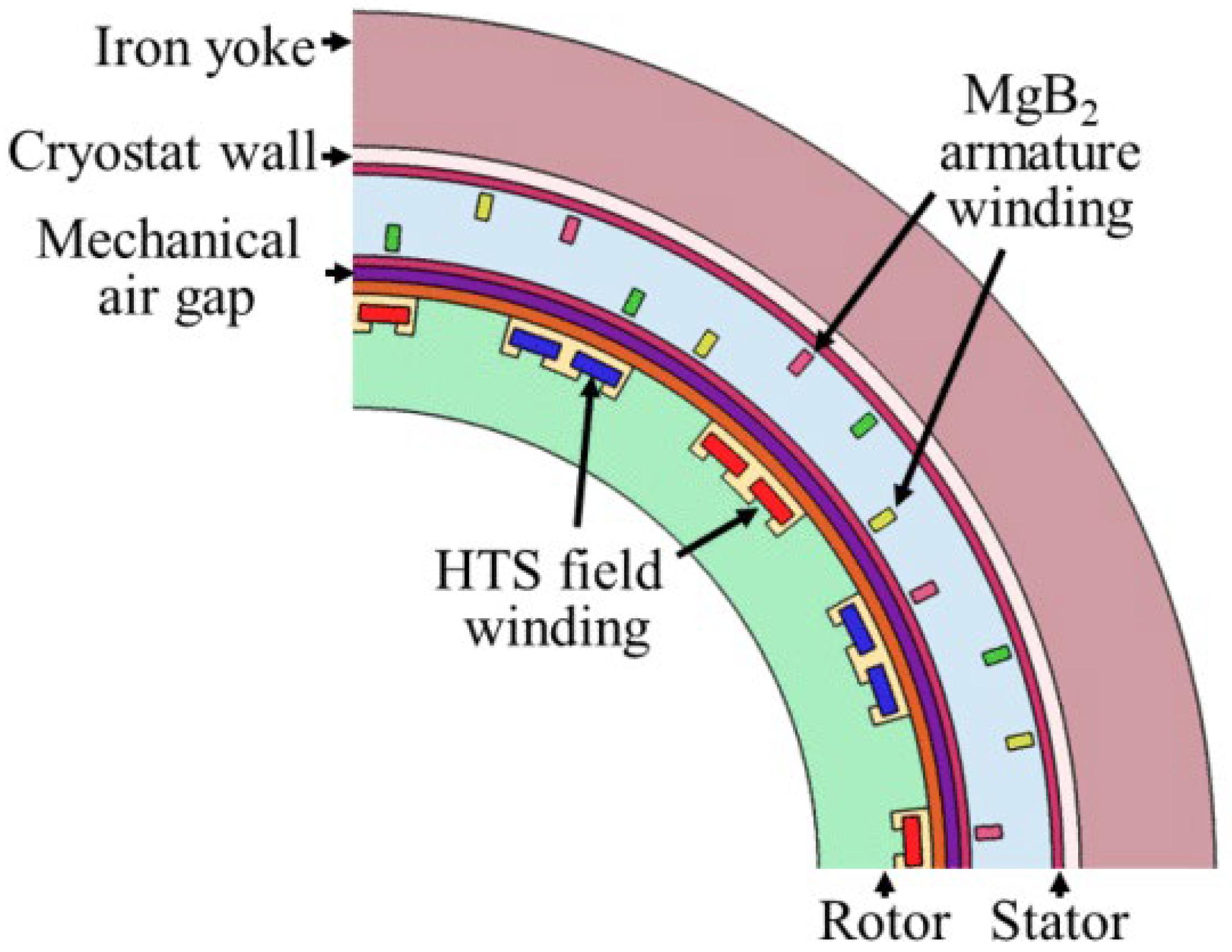
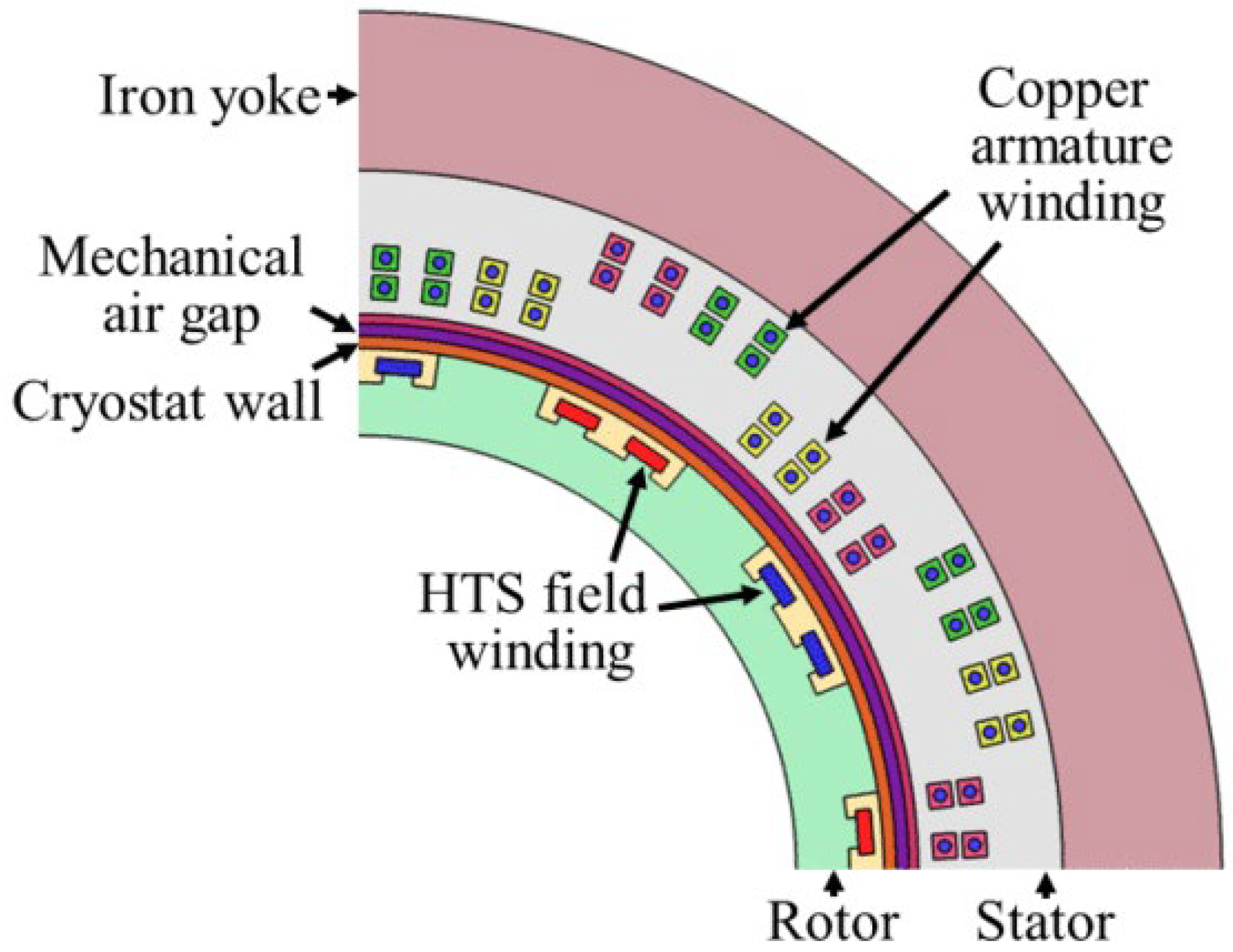

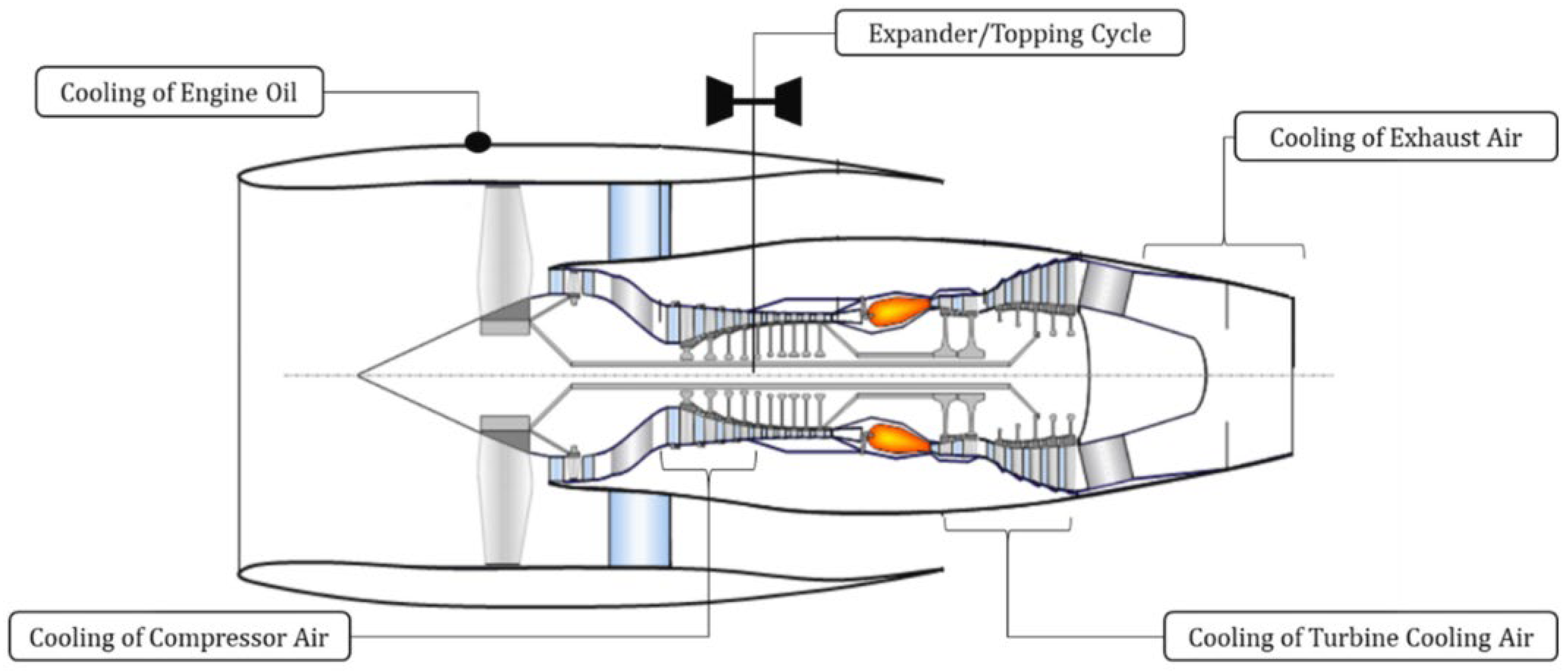
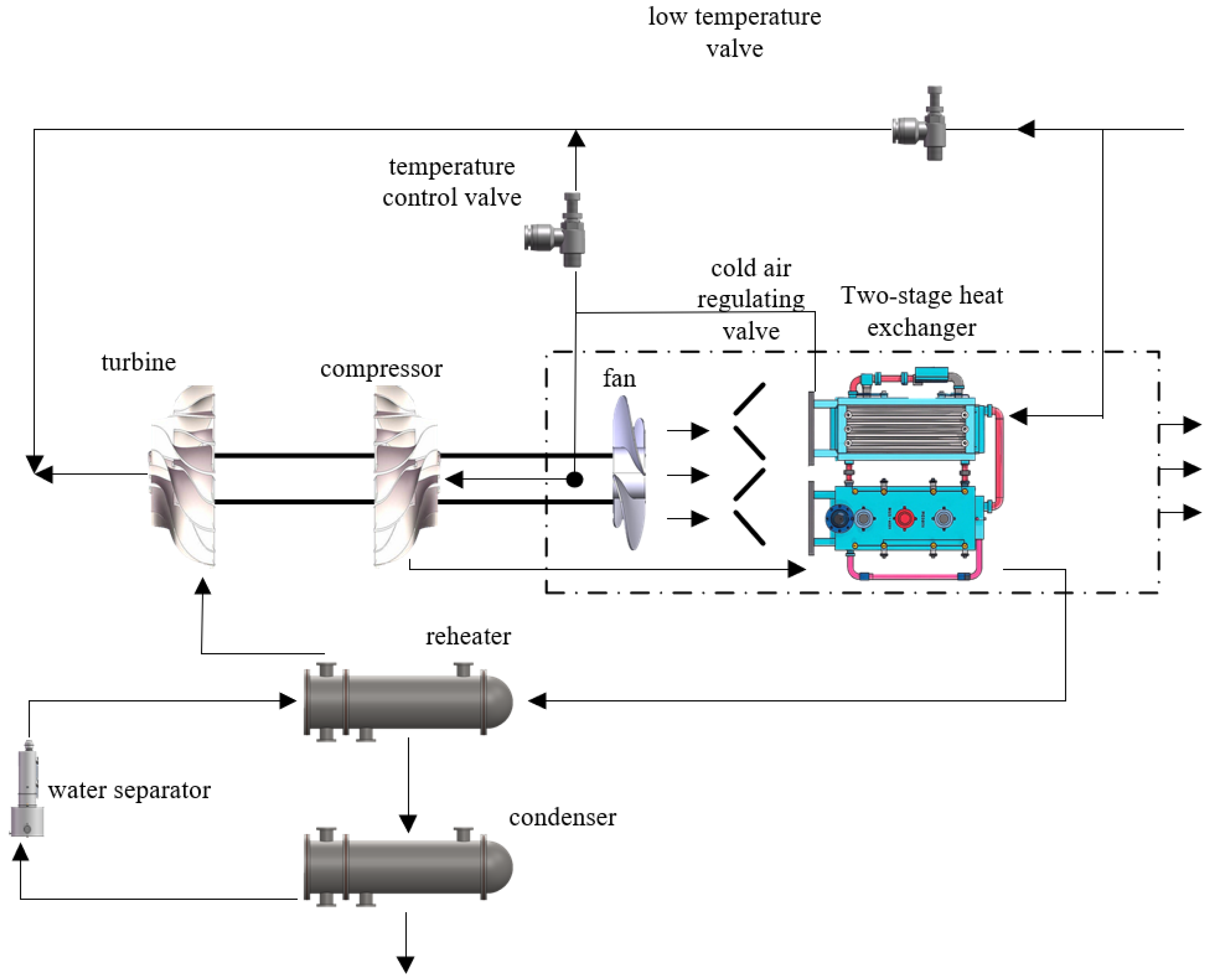

| Project Name | Leading Organization | Project Duration | EU Funding (€10,000) | Main R&D Content |
|---|---|---|---|---|
| CAVENDISH: Consortium for the Advent of aero-Engine Demonstration and aircraft Integration Strategy with Hydrogen | Rolls-Royce (Germany) | January 2023–December 2026 | 2167 | Ground verification of hydrogen aero-engine (based on the “Pearl” 15 engine) |
| HYDEA: Hydrogen Demonstrator for Aviation | AVIO (a GE company) | January 2023–December 2026 | 8050 | Ground verification of hydrogen aero-engine (based on the “Passport” 20 engine) |
| NEWBORN: Next-Generation High-Power Fuel Cells for Airborne Applications | Honeywell | January 2023–June 2026 | 3332 | Megawatt-class hydrogen fuel cell |
| H2ELIOS: Hydrogen Lightweight and Innovative Tank for Zero-Emission Aircraft | ACITURRI | January 2023–December 2025 | 996 | Large lightweight liquid hydrogen storage tank solutions |
| Flhying Tank: Flight Demonstration of a Liquid Hydrogen Load-Bearing Tank in an Unmanned Cargo Platform | PIPISTREL | January 2023–December 2025 | 300 | Verification of liquid hydrogen storage tanks on flight |
| Hypotrade: Hydrogen Fuel Cell Electric Power Train Demonstration | PIPISTREL | January 2023–December 2025 | 400 | Ground verification of hydrogen-electric powertrain |
| Heaven: High-Power Density FC System for Aerial Passenger Vehicle Fueled by Liquid Hydrogen | Rolls-Royce (Germany) | January 2023–December 2026 | 2991 | Development of “ultrafan” engines and hydrogen combustion/blending technologies for short- and medium-range engines |
| Faster-H2: Fuselage, Rear Fuselage, and Empennage with Cabin and Cargo Architecture Solution validation and Technologies for H2 integration | Airbus | January 2023–March 2026 | 2490 | Hydrogen airframe architecture integration, integration of new propulsion systems, hydrogen storage tanks, and distribution systems |
| Concerto: Construction of Novel Certification Methods and Means of Compliance for Disruptive Technologies | Dassault Aviation | January 2023–December 2026 | 2009 | Novel certification methods and compliance approaches for hydrogen, hybrid electric propulsion, and other technologies |
| Project Name | Leading Organization | Project Duration | EU Funding (€10,000) | Main R&D Content |
|---|---|---|---|---|
| Cocolih2t: Composite Conformal Liquid H2 Tank | Collins Aerospace Ireland | February 2023–January 2026 | 873 | Thermoplastic plastic liquid hydrogen tank |
| Nimphea: Next-Generation MEA for Aviation | Safran | January 2023–December 2026 | 494 | Next-generation improved high-temperature membrane electrode assembly |
| Brava: Breakthrough Fuel Cell Technologies for Aviation | Airbus | December 2022–November 2025 | 1999 | Megawatt-class aviation hydrogen fuel cell system |
| Heaven: Hydrogen Engine Architecture Virtually Engineered Novelly | H2FLY | January 2019–September 2023 | 690 | High-power density liquid hydrogen fuel cell system |
| Flhysafe: Fuel CelL Hydrogen System for Aircraft Emergency Operation | SAFRAN | January 2018–June 2023 | 730 | Emergency power system based on aviation hydrogen fuel cells |
| Project Name | Leading Organization | Project Duration | EU Funding (€10,000) | Main R&D Content |
|---|---|---|---|---|
| Hyest: Hydrogen Engine System Technologies | Rolls-Royce | — | 1480 | Hydrogen combustion chamber components and subsystem structures |
| Rachel: Robust Hydrogen Turbine Power Design | Rolls-Royce | — | 3660 | Hydrogen energy technology related to nacelles, engine externals, and power systems |
| Lh2gt: Liquid Hydrogen Gas Turbine | Rolls-Royce | — | 3140 | Hydrogen transport and control technology from tank to combustion chamber |
| Hcnp0: Hydrogen Capability Network Project 0 | — | — | 129 | Understanding the infrastructure required for end-to-end testing of hydrogen-powered flight systems and planning for commercial operations |
| H2gear: Hybrid Hydrogen and Electric Architecture | GKN | December 2020–September 2025 | 2719 | Hydrogen fuel cell systems, next-generation low-temperature motors/drives, and electrical networks |
| Hyflyer II | ZeroAvia | December 2020–February 2023 | 1226 | 600kW hydrogen-electric power system |
| Fresson | Cranfield Aerospace Solutions (CAeS) | October 2019–March 2023 | 962 | Retrofit of a 9-seat aircraft to hydrogen-electric powered aircraft |
| Comparison Items | Risk of Collision Explosion | Risk of Thermal Radiation | Risk of Frostbite | Risk of Leakage | High/Low Ignition Temperature | Risk of Non-Flammable Combustion | Toxicity Risk |
|---|---|---|---|---|---|---|---|
| Hydrogen fuel | ● | ● | — | — | — | — | ● |
| Aviation fuel oil | — | — | ● | ● | ● | ● | — |
Disclaimer/Publisher’s Note: The statements, opinions and data contained in all publications are solely those of the individual author(s) and contributor(s) and not of MDPI and/or the editor(s). MDPI and/or the editor(s) disclaim responsibility for any injury to people or property resulting from any ideas, methods, instructions or products referred to in the content. |
© 2025 by the authors. Licensee MDPI, Basel, Switzerland. This article is an open access article distributed under the terms and conditions of the Creative Commons Attribution (CC BY) license (https://creativecommons.org/licenses/by/4.0/).
Share and Cite
Zheng, Z.; Ma, J.; Hou, J.; Gong, Z.; Xie, J.; Chen, J. Liquid Hydrogen Application for Aero-Engine More-Electrical System: Current Status, Challenges and Future Prospects. Cryo 2025, 1, 5. https://doi.org/10.3390/cryo1010005
Zheng Z, Ma J, Hou J, Gong Z, Xie J, Chen J. Liquid Hydrogen Application for Aero-Engine More-Electrical System: Current Status, Challenges and Future Prospects. Cryo. 2025; 1(1):5. https://doi.org/10.3390/cryo1010005
Chicago/Turabian StyleZheng, Zhaoyang, Jiaqi Ma, Jiaxin Hou, Ziqiao Gong, Junlong Xie, and Jianye Chen. 2025. "Liquid Hydrogen Application for Aero-Engine More-Electrical System: Current Status, Challenges and Future Prospects" Cryo 1, no. 1: 5. https://doi.org/10.3390/cryo1010005
APA StyleZheng, Z., Ma, J., Hou, J., Gong, Z., Xie, J., & Chen, J. (2025). Liquid Hydrogen Application for Aero-Engine More-Electrical System: Current Status, Challenges and Future Prospects. Cryo, 1(1), 5. https://doi.org/10.3390/cryo1010005






